Teacher’s Day/ Guru Divas
In India, Teacher’s Day is celebrated on the 5th of September, which is the birthday of the second president of India, Dr. Sarvapalli Radhakrishnan. It was his wish to celebrate his birthday as Teacher’s Day. On this day schools are open, both students and teachers go to school, however, instead of routine studies, there are other fun activities. Some schools give awards or prizes to teachers. In some schools, senior students take the responsibility of teaching and teach junior students. Different countries celebrate Teacher’s Day on different days, usually based on some educational milestone or the birthday of a local educator. In some cases, the day is based on discoveries made in education.
In ancient India, the term for teacher was guru. The breakdown of this word is gu, which means darkness, and ru, which means ‘one who removes or dispels’. Guru is a remover of darkness. Guru takes students from darkness to light of knowledge.
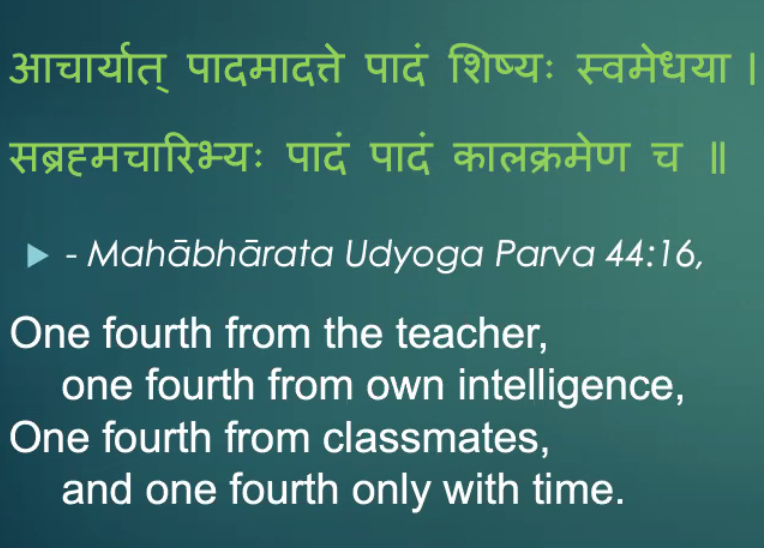
In the U.S.A., Teachers Day is celebrated on May 5th. Teachers Appreciation Week is during the first week of May. This year it is from the 4th to the 8th of May.
This year teachers are supporting and helpings their students in ways they had never done before. They’re making sure that every student keeps learning during this extraordinarily tough time. They have truly risen to the occasion and are going above and beyond what they are supposed to do.
They’re making new lesson plans for online classes and are inspiring students. The teachers are finding new ways to connect with students online and also keeping them engaged during online lessons. They’re making sure that children have adequate homework, not too much and not too little. At the same time, they’re answering many questions from parents as the parents are apprehensive too and are asking zillions of questions.
I thank them for their creativity, their inspiring and engaging lessons, and the attitude of not giving up. They’re developing a strong, special, and personal relationship with children.
Terms related to teacher:
- Educator
- Lecturer
- Professor
- Guide
- Mentor
- Researcher
- Advisor
- Counselor
- Aide
- Coach
- Coordinator
- Instructor
They’re many other days related to education. Some of these are:
- Principal Appreciation Day, Week, Month.
- National Assistant Principal Week
- World Student Day
- National Student Day
- International/World Teacher’s Day, etc.
International Teacher’s Day is October 5th every year. Roughly 21 countries celebrate Teacher’s Day on the 5th of October.
Some terms:
Guru Vandana
Vandana means to worship, reverence, praise, adoration. Guru Vandana is the worship of guru.
Guru Dakshina
Dakshina means donation or daan.
In vedic tradition, knowledge is given free of cost. The thought is that, no monetory price can be attached to the knowledge which a guru gives to his students. Guru helps in overall personality and virtue development and this is priceless.. Guru Dakshina is a tradition of giving something to the guru at the end of education. It is a way to express gratitide. It can be anything given voluntarily by students, or guru can ask for a specific thing.
Guru Purnima
Also known as Vyas Purnima. It is celebrated on the full moon or Purnima day in the month of Ashad (June/July).
Guru Shisya parampara - This does not translate to teacher-student relationship. Parampara means tradition. Guru-shishya parampara means passing of knowledge from guru to students.
Doha stating importance of teacher or guru
गुरू गोविन्द दोऊ खड़े, काके लागूं पांय।
बलिहारी गुरू अपने गोविन्द दियो बताय।।
Guru Govind dou khade, kake lagoon paay,
Balihari Guru aapno, Govind diyo batay
इस दोहे का मतलब यह नहीं है कि गुरु ईश्वर से बड़ा है, इसका सिर्फ यही अर्थ है कि गुरु ईश्वर की राह दिखाने वाला है, ईश्वर से बड़ा कोई नहीं है
Guru Strotam from Chinmaya Mission Book

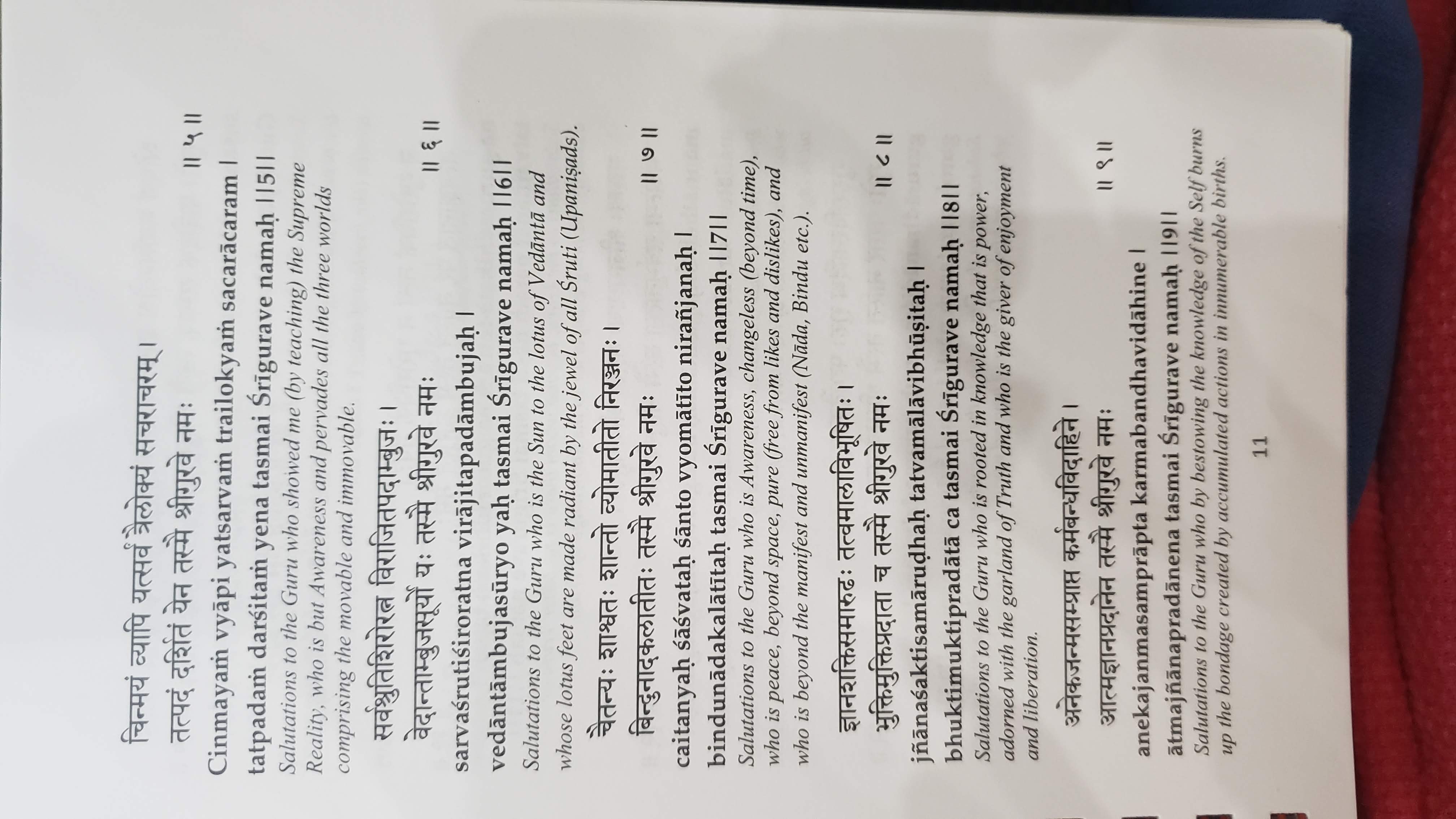
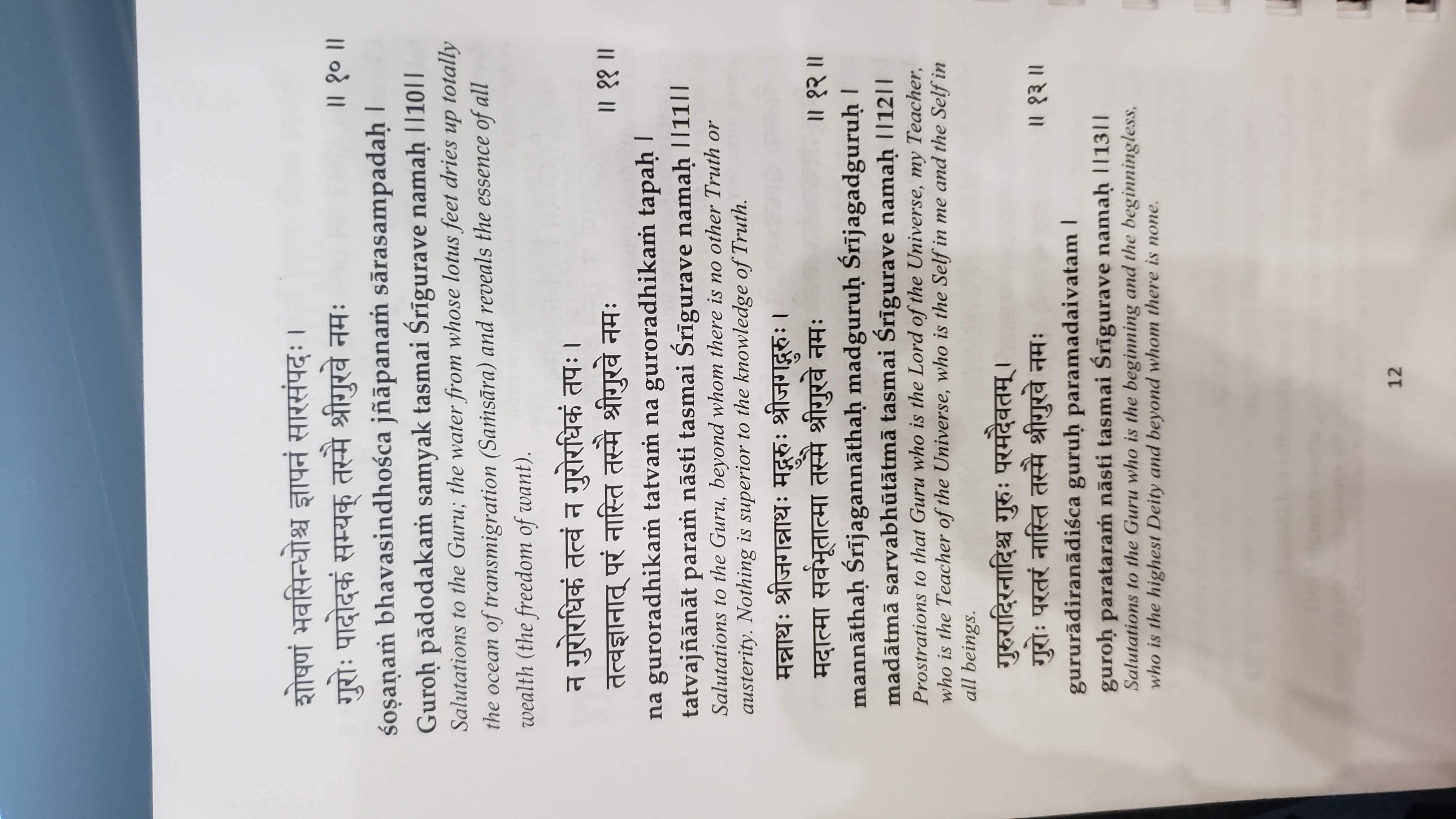

Spiritual Perspective
Teachers give knowledge of different subjects to students. However, school teachers are not the only ones from whom we learn. We learn from everyone and everything in the universe and cosmos. We even learn from ourselves. Learning is from inside as well as outside. We learn from our past experiences, our thoughts, our reflexes, our emotions, feelings, interactions, relations, etc. We learn from animals, plants, birds, wind, water, etc. We learn from interaction with others and other's interactions and relations. We learn from stories, rumors, news, shows, and movies. We learn from children, old people, dying people, and newborns. Learning can be active or passive and is of different levels and has a different kind of impact on us. Some learnings are very profound, some are subtle, and some are in between.
An Acharya is one who teaches by conduct and leads by example. Char is walk or behave. Conduct is Achar. Achar-> Acharya.
Acharya word is used as a title also e.g. Adi Shankaracharya, Madhvacharya.
The Acharyas are of two types:
- Anuvrtti-prasann Acharya. The student seeks out the Acharya and requests to be accepted as a student.
- Kripa-matra-prasann Acharya. Acharyas happily teach any student who needs the knowledge
There are four types of Shisyas
- Sāmānya śiṣya — students who receive Panch Sanskar
- Putra — Live with Acharya, like a son
- Sādhak — Get initiation and perform duties
- Āchārya — They teach and initiate others
Initiation or Diksha is the process of accepting Guru Shisya relation and start of Guru Shisya Parampara.
Shisya or students should learn by Shravan, Manan, and Nididhyasan, means by listening, reflecting, and making it a part of life.
- Pranipaten is the surrender of shisya to Guru
- Pari-prashnen is getting knowledge by questions- answers and debate
- Seva is personal service to Guru
Satyam, Shivam, Sundaram are the fundamental pillars of teaching. It means imparting true knowledge which is for the larger good and beautifully explained, leading to Shanti.
दीक्षान्त समारोह or Covocation or Graduation is at the end of teaching or education.
To become a student is a Adhikar which comes with some eligibility and responsibility.
Not everyone is eligible to receive knowledge. Giving knowledge to unworthy people is a wastage of time. It is a fruitless task with no use. It takes time away from constructive things. Worthy people may be deprived of knowledge if more time is wasted on uneligible students. If given to a wrong person, the giver may receive a negative energy and may get attacked by the receiver. Giver may be titled fundamentalist and his teachings may be used against him, later on.
Gurukul learning vs. modern education
At the beginning of creation, knowledge was received by a few selected people via Shruti. Knowledge was heard. It was stored in memory or Smriti of rishis. This knowledge was then orally or verbally passed down to new generations. Guru used to pass this knowledge to his students. Not everyone had access to this knowledge.
Initially, it was one to one teaching. Then, there was a system of one teacher and a few students, and then there was a time when many students and teachers were in one gurukul and slowly it progressed to the modern education system.
Gurukuls were run on charity or donations. Guru was teaching without charging a fee. At the end of education students used to give guru Dakshina. As students lived with their gurus in gurukul, the guru was giving them the knowledge and contributed to their personal development. Guru and students lived like a family. Students used to do chores for the guru and his family. All students in gurukul were considered equal; they were given the same types of clothes, food, and living arrangements. There was brotherhood between students and there was no discrimination based on their parent’s social status.
For a myriad of reasons the gurukul system slowly collapsed and is almost extinct now.
In the modern education system, both students and teachers go to a school building for giving and taking education. Educational institutes are money-making businesses. Students pay a fee and teachers earn money. Students and teachers both have goals to complete and both are under stress. There is a fixed curriculum that needs to be covered in a fixed time. This has changed the teacher-student relationship. Teachers still have an impact on students; there is no denial of this fact but that relationship has changed. Education is not an overall development of a person but a means to get a good job and money.
Teachers have to cover the curriculum which has been set by someone else. Teachers are not teaching their own ideas. Teachers are teaching many students who may be in different grades. They are busy completing their tasks and paperwork, it is hard to pay individual attention to students. They are not fully devoted to students. I am not trying to undermine all teachers but truth is that they teach because they have to.
Both teachers and students come from different backgrounds and have access to different things at home and in schools. They may wear different types of dress, have different accessories e.g. phone, watch, computer.
Students are interacting with many people, not only their teachers. So, many people influence students.
In gurukul, the teacher was deciding which students to accept. Now the teacher has no say in the admission process. The timings of studies were not fixed in the gurukul. Now the timings of each class are fixed. The evaluation of students was by a teacher in the gurukul. Now evaluation is based on many different tests and is done by many teachers. In gurukul whatever the teacher said was final. Now teachers are being sued and complaints can be registered against them. In gurukul there was no competition between students, there were no ranks, no judging by anyone other than guru, there was no race to get pass score and job. There was one teacher in the gurukul. Now there are many teachers, teaching different subjects. Students are exposed to different thinking and minds. They have many opportunities. They can decide what they want to do. The educational material is readily available and the material is from different authors so that student gets exposed to many ideas and thought processes. Previously students were learning and keeping it in their memory now focus is on gathering information and saving data.
Universities in India:
- Takshshila
- Mithila
- Telhara (near Nalanda)
- Sharada Peeth Temple University
- Nalanda
- Jagaddala
- Vallabhi
- Pushpagiri, near Kalinga
- Somapura university (Bangladesh)
- Nagarjuna Vidyapeeth (Andhra Pradesh)
- Vikranshila
- Odantapuri
- Kashmir
Some Gurus/Rishis:
- Aryabhat- Mathematics and astronomy
- Bhardwaj--Aeronautics
- Bhaskaracharya-Ganit and astronomy
- Charak--Physician
- Dhanvantari- Anatomy
- Kanad- Atomic science
- Madvacharya- Mathematics/Ganit
- Maya asur--Architecture
- Nagarjun- Chemist
- Patanjali- Yog sutr
- Salihotra- Aquine veterinarian
- Susruth- Surgeon
- Vagbhat- Physician
- Varamihir- Chemistry, astronomy
- Viswakarma- Architect
Gurukul:
- All children are treated equally
- All have same clothes
- All have same books( same books, not even the old and new edition), No priviledge of private tuitions
- All have same food
- All have same space
- All have same beds
- All have same teachers
- All have same chores
- All have same surroundings
- All have same dishes to use
- All drink same water
- No one has extra or special previleges
Source: https://www.myindiamyglory.com/2019/02/14/15-ancient-universities-of-india-from-3600-plus-years-ago/
Following is a whatsapp forward:

गुरु पूर्णिमा: क्यों है राष्ट्रीय स्वयंसेवक संघ का गुरु “भगवा ध्वज”
राष्ट्रीय स्वयंसेवक संघ के संस्थापक डॉ. केशवराव बलिराम हेडगेवार ने 1925 में राष्ट्रीय स्वयंसेवक संघ की स्थापना के समय भगवा ध्वज को गुरु के रूप में प्रतिष्ठित किया। इसके पीछे मूल भाव यह था कि व्यक्ति पतित हो सकता है पर विचार और पावन प्रतीक नहीं। विश्व का सबसे बड़ा स्वयंसेवी संगठन गुरु रूप में इसी भगवा ध्वज को नमन करता है पर्वों, त्योहारों और संस्कारों की भारतभूमि पर गुरु का परम महत्व माना गया है। गुरु शिष्य की ऊर्जा को पहचानकर उसके संपूर्ण सामर्थ्य को विकसित करने में सहायक होता है। गुरु नश्वर सत्ता का नहीं, चैतन्य विचारों का प्रतिरूप होता है। रा. स्व. संघ के आरम्भ से ही भगवा ध्वज गुरु के रूप में प्रतिष्ठित है। *साभार :- पाञ्चजन्य
https://archive.org/details/TheBeautifulTree-Dharampal/page/n369/mode/2up
Bharti Raizada
Whatsapp forwards:
गुरुकुल कैसे खत्म हो गये ?
भारतवर्ष में गुरुकुल कैसे खत्म हो गये ? कॉन्वेंट स्कूलों ने किया बर्बाद | 1858 में Indian Education Act बनाया गया। इसकी ड्राफ्टिंग ‘लोर्ड मैकोले’ ने की थी। लेकिन उसके पहले उसने यहाँ (भारत) के शिक्षा व्यवस्था का सर्वेक्षण कराया था, उसके पहले भी कई अंग्रेजों ने भारत की शिक्षा व्यवस्था के बारे में अपनी रिपोर्ट दी थी। अंग्रेजों का एक अधिकारी था G.W. Litnar और दूसरा था Thomas Munro ! दोनों ने अलग अलग इलाकों का अलग-अलग समय सर्वे किया था। Litnar, जिसने उत्तर भारत का सर्वे किया था, उसने लिखा है कि यहाँ 97% साक्षरता है और Munro, जिसने दक्षिण भारत का सर्वे किया था, उसने लिखा कि यहाँ तो 100% साक्षरता है |
मैकोले का स्पष्ट कहना था कि भारत को हमेशा-हमेशा के लिए अगर गुलाम बनाना है तो इसकी “देशी और सांस्कृतिक शिक्षा व्यवस्था” को पूरी तरह से ध्वस्त करना होगा और उसकी जगह “अंग्रेजी शिक्षा व्यवस्था” लानी होगी और तभी इस देश में शरीर से हिन्दुस्तानी लेकिन दिमाग से अंग्रेज पैदा होंगे और जब इस देश की यूनिवर्सिटी से निकलेंगे तो हमारे हित में काम करेंगे | मैकाले एक मुहावरा इस्तेमाल कर रहा है : “कि जैसे किसी खेत में कोई फसल लगाने के पहले पूरी तरह जोत दिया जाता है वैसे ही इसे जोतना होगा और अंग्रेजी शिक्षा व्यवस्था लानी होगी।” इस लिए उसने सबसे पहले गुरुकुलों को गैरकानूनी घोषित किया | जब गुरुकुल गैरकानूनी हो गए तो उनको मिलने वाली सहायता जो समाज की तरफ से होती थी वो गैरकानूनी हो गयी | फिर संस्कृत को गैरकानूनी घोषित किया और इस देश के गुरुकुलों को घूम घूम कर ख़त्म कर दिया | उनमें आग लगा दी, उसमें पढ़ाने वाले गुरुओं को उसने मारा- पीटा, जेल में डाला।
1850 तक इस देश में ’7 लाख 32 हजार’ गुरुकुल हुआ करते थे और उस समय इस देश में गाँव थे ’7 लाख 50 हजार’ | मतलब हर गाँव में औसतन एक गुरुकुल और ये जो गुरुकुल होते थे वो सब के सब आज की भाषा में ‘Higher Learning Institute’ हुआ करते थे उन सबमे 18 विषय पढाया जाता था और ये गुरुकुल समाज के लोग मिलके चलाते थे न कि राजा, महाराजा | इन गुरुकुलों में शिक्षा निःशुल्क दी जाती थी। इस तरह से सारे गुरुकुलों को ख़त्म किया गया और फिर अंग्रेजी शिक्षा को कानूनी घोषित किया गया और कलकत्ता में पहला कॉन्वेंट स्कूल खोला गया | उस समय इसे ‘फ्री स्कूल’ कहा जाता था, इसी कानून के तहत भारत में कलकत्ता यूनिवर्सिटी बनाई गयी, बम्बई यूनिवर्सिटी बनाई गयी, मद्रास यूनिवर्सिटी बनाई गयी और ये तीनों गुलामी के ज़माने के यूनिवर्सिटी आज भी इस देश में हैं |
मैकोले ने अपने पिता को एक चिट्ठी लिखी थी बहुत मशहूर चिट्ठी है वो, उसमें वो लिखता है कि: “इन कॉन्वेंट स्कूलों से ऐसे बच्चे निकलेंगे जो देखने में तो भारतीय होंगे लेकिन दिमाग से अंग्रेज होंगे और इन्हें अपने देश के बारे में कुछ पता नहीं होगा | इनको अपने संस्कृति के बारे में कुछ पता नहीं होगा, इनको अपने परम्पराओं के बारे में कुछ पता नहीं होगा, इनको अपने मुहावरे नहीं मालूम होंगे, जब ऐसे बच्चे होंगे इस देश में तो अंग्रेज भले ही चले जाएँ इस देश से अंग्रेजियत नहीं जाएगी।” उस समय लिखी चिट्ठी की सच्चाई इस देश में अब साफ़-साफ़ दिखाई दे रही है और उस एक्ट की महिमा देखिये कि हमें अपनी भाषा बोलने में शर्म आती है, अंग्रेजी में बोलते हैं कि दूसरों पर रोब पड़ेगा, अरे हम तो खुद में हीन हो गए हैं जिसे अपनी भाषा बोलने में शर्म आ रही है, दूसरों पर रोब क्या पड़ेगा। लोगों का तर्क है कि अंग्रेजी अंतर्राष्ट्रीय भाषा है, दुनिया में 204 देश हैं और अंग्रेजी सिर्फ 11 देशों में बोली, पढ़ी और समझी जाती है, फिर ये कैसे अंतर्राष्ट्रीय भाषा है। शब्दों के मामले में भी अंग्रेजी समृद्ध नहीं दरिद्र भाषा है। इन अंग्रेजों की जो बाइबिल है वो भी अंग्रेजी में नहीं थी और ईशा मसीह अंग्रेजी नहीं बोलते थे। ईशा मसीह की भाषा और बाइबिल की भाषा अरमेक थी। अरमेक भाषा की लिपि जो थी वो हमारे बंगला भाषा से मिलती जुलती थी | समय के कालचक्र में वो भाषा विलुप्त हो गयी। संयुक्तराष्टसंघ जो अमेरिका में है वहां की भाषा अंग्रेजी नहीं है, वहां का सारा काम फ्रेंच में होता है। जो समाज अपनी मातृभाषा से कट जाता है उसका कभी भला नहीं होता और यही मैकोले की रणनीति थी !जिसमे लगभग वो विजय पा चुके क्योंकि आज का युवा भारत को कम यूरोप को ज्यादा जनता है भारतीय संस्कृति को ढकोसला समझता है लेकिन पाश्चात्य देशों को नकल करता है सनातन धर्म की प्रमुखता और विशेषता को न जानते हुए भी बामपंथियों का समर्थन करता है।
सभी बन्धुओ से एक चुभता सवाल हमसभी को धर्म की जानकारी होनी चाहिये क्योंकि धर्म ही हमे राष्ट्र धर्म सिखाती है धर्म ही हमे समाजिकता सिखाती है धर्म ही हमे माता पिता और गुरु राष्ट्र के प्रति निछावर करने की प्रेरणा देती है।
सनातन परंपरा एक आध्यात्मिक विज्ञान है , जिस विज्ञान को हम सभी आज जानते है उससे बहुत ही समृद्ध विज्ञान अध्यात्म है।
जंगल के स्कूल का रिजल्ट byRecharging life
हुआ यूँ कि जंगल के राजा शेर ने ऐलान कर दिया कि अब आज के बाद कोई अनपढ़ न रहेगा। हर पशु को अपना बच्चा स्कूल भेजना होगा। राजा साहब का स्कूल पढ़ा-लिखाकर सबको Certificate बँटेगा।
सब बच्चे चले स्कूल। हाथी का बच्चा भी आया, शेर का भी, बंदर भी आया और मछली भी, खरगोश भी आया तो कछुआ भी, ऊँट भी और जिराफ भी।
FIRST UNIT TEST/EXAM हुआ तो हाथी का बच्चा फेल।
“किस Subject में फेल हो गया जी?”
“पेड़ पर चढ़ने में फेल हो गया, हाथी का बच्चा।”
“अब का करें?”
“ट्यूशन दिलवाओ, कोचिंग में भेजो।”
अब हाथी की जिन्दगी का एक ही मक़सद था कि हमारे बच्चे को पेड़ पर चढ़ने में Top कराना है।
किसी तरह साल बीता। Final Result आया तो हाथी, ऊँट, जिराफ सब फेल हो गए। बंदर की औलाद first आयी। Principal ने Stage पर बुलाकर मैडल दिया। बंदर ने उछल-उछल के कलाबाजियाँ दिखाकरगुलाटियाँ मार कर खुशी का इजहार किया। उधर अपमानित महसूस कर रहे हाथी, ऊँट और जिराफ ने अपने-अपने बच्चे कूट दिये। नालायकों, इतने महँगे स्कूल में पढ़ाते हैं तुमको | ट्यूशन-कोचिंग सब लगवाए हैं। फिर भी आज तक तुम पेड़ पर चढ़ना नहीं सीखे। सीखो, बंदर के बच्चे से सीखो कुछ, पढ़ाई पर ध्यान दो।
फेल हालांकि मछली भी हुई थी। बेशक़ Swimming में First आयी थी पर बाकी subject में तो फेल ही थी। मास्टरनी बोली, “आपकी बेटी के साथ attendance की problem है।” मछली ने बेटी को आँखें दिखाई। बेटी ने समझाने की कोशिश की कि, ”माँ, मेरा दम घुटता है इस स्कूल में। मुझे साँस ही नहीं आती। मुझे नहीं पढ़ना इस स्कूल में। हमारा स्कूल तो तालाब में होना चाहिये न?” नहीं, ये राजा का स्कूल है। तालाब वाले स्कूल में भेजकर मुझे अपनी बेइज्जती नहीं करानी। समाज में कुछ इज्जत Reputation है मेरी। तुमको इसी स्कूल में पढ़ना है। पढ़ाई पर ध्यान दो।”
हाथी, ऊँट और जिराफ अपने-अपने Failure बच्चों को पीटते हुए ले जा रहे थे। रास्ते में बूढ़े बरगद ने पूछा, ”क्यों पीट रहे हो, बच्चों को?” जिराफ बोला, ”पेड़ पर चढ़ने में फेल हो गए?”
बूढ़ा बरगद सबसे फ़ते की बात बोला, ”पर इन्हें पेड़ पर चढ़ाना ही क्यों है ?” उसने हाथी से कहा, ”अपनी सूंड उठाओ और सबसे ऊँचा फल तोड़ लो। जिराफ तुम अपनी लंबी गर्दन उठाओ और सबसे ऊँचे पत्ते तोड़-तोड़ कर खाओ।” ऊँट भी गर्दन लंबी करके फल पत्ते खाने लगा। हाथी के बच्चे को क्यों चढ़ाना चाहते हो पेड़ पर? मछली को तालाब में ही सीखने दो न?
दुर्भाग्य से आज स्कूली शिक्षा का पूरा Curriculum और Syllabus सिर्फ बंदर के बच्चे के लिये ही Designed है। इस स्कूल में 35 बच्चों की क्लास में सिर्फ बंदर ही First आएगा। बाकी सबको फेल होना ही है। हर बच्चे के लिए अलग Syllabus, अलग subject और अलग स्कूल चाहिये।
हाथी के बच्चे को पेड़ पर चढ़ाकर अपमानित मत करो। जबर्दस्ती उसके ऊपर फेलियर का ठप्पा मत लगाओ। ठीक है, बंदर का उत्साहवर्धन करो पर शेष 34 बच्चों को नालायक, कामचोर, लापरवाह, Duffer, Failure घोषित मत करो।
मछली बेशक़ पेड़ पर न चढ़ पाये पर एक दिन वो पूरा समंदर नाप देगी।
शिक्षा – अपने बच्चों की क्षमताओं व प्रतिभा की कद्र करें चाहे वह पढ़ाई, खेल, नाच, गाने, कला, अभिनय, BUSINESS, खेती, बागवानी, मकेनिकल, किसी भी क्षेत्र में हो और उन्हें उसी दिशा में अच्छा करने दें | जरूरी नहीं कि सभी बच्चे पढ़ने में ही अव्वल हो बस जरूरत हैं उनमें अच्छे संस्कार व नैतिक मूल्यों की जिससे बच्चे गलत रास्ते नहीं चुने l
गुरू क्या है byRecharging life
स्वामी रामकृष्ण परमहंस जी कैंसर रोग से पीड़ित थे। उन्हें खाँसी बहुत आती थी और वे खाना भी नहीं खा सकते थे। स्वामी विवेकानंद जी अपने गुरु जी की हालत से बहुत चिंतित थे।
एक दिन की बात है स्वामी रामकृष्ण परमहंस जी ने विवेकानंद जी को अपने पास बुलाया और बोले –
“नरेंद्र, तुझे वो दिन याद है, जब तू अपने घर से मेरे पास मंदिर में आता था ? तूने दो-दो दिनों से कुछ नहीं खाया होता था। परंतु अपनी माँ से झूठ कह देता था कि तूने अपने मित्र के घर खा लिया है, ताकि तेरी गरीब माँ थोड़े बहुत भोजन को तेरे छोटे भाई को परोस दें। हैं न ?”
नरेंद्र ने रोते-रोते हाँ में सर हिला दिया।
स्वामी रामकृष्ण परमहंस फिर बोले – “यहां मेरे पास मंदिर आता, तो अपने चेहरे पर ख़ुशी का मुखौटा पहन लेता। परन्तु मैं भी झट जान जाता कि तेरा शरीर क्षुधाग्रस्त है। और फिर तुझे अपने हाथों से लड्डू, पेड़े, माखन-मिश्री खिलाता था। है ना ?”
नरेंद्र ने सुबकते हुए गर्दन हिलाई।
अब रामकृष्ण परमहंस फिर मुस्कुराए और प्रश्न पूछा – “कैसे जान लेता था मैं यह बात ? कभी सोचा है तूने ?”
नरेन्द्र सिर उठाकर परमहंस को देखने लगे।
“बता न, मैं तेरी आंतरिक स्थिति को कैसे जान लेता था ?”
नरेंद्र – “क्योंकि आप अंतर्यामी हैं गुरुदेव”।
राम कृष्ण परमहंस – “अंतर्यामी, अंतर्यामी किसे कहते हैं ?”
नरेंद्र – “जो सबके अंदर की जाने” !!
परमहंस – “कोई अंदर की कब जान सकता है ?”
नरेंद्र – “जब वह स्वयं अंदर में ही विराजमान हो।”
परमहंस – “अर्थात मैं तेरे अंदर भी बैठा हूँ। हूँ ना ?”
नरेंद्र – “जी बिल्कुल। आप मेरे हृदय में समाये हुए हैं।”
परमहंस – “तेरे भीतर में समाकर मैं हर बात जान लेता हूँ। हर दुःख दर्द पहचान लेता हूँ। तेरी भूख का अहसास कर लेता हूँ, तो क्या तेरी तृप्ति मुझ तक नहीं पहुँचती होगी ?”
नरेंद्र – “तृप्ति ?”
परमहंस – “हाँ तृप्ति! जब तू भोजन करता है और तुझे तृप्ति होती है, क्या वो मुझे तृप्त नहीं करती होगी ? अरे पगले, गुरु अंतर्यामी है, अंतर्जगत का स्वामी है। वह अपने शिष्यों के भीतर बैठा सब कुछ भोगता है। मैं एक नहीं हज़ारों मुखों से खाता हूँ।”
याद रखना, गुरु कोई बाहर स्थित एक देह भर नहीं है। वह तुम्हारे रोम-रोम का वासी है। तुम्हें पूरी तरह आत्मसात कर चुका है। अलगाव कहीं है ही नहीं। अगर कल को मेरी यह देह नहीं रही, तब भी जीऊंगा, तेरे माध्यम से जीऊंगा। मैं तुझमें रहूँगा।
गुरुर्ब्रम्हा गुरुर्विष्णुः गुरुः देवो महेश्वरः
गुरुर्साक्षात परब्रह्मः तस्मै श्री गुरुवे नमः

Educational Heritage of Ancient India.pdf
Ek Kore Kagaz Pe

Definitions of Rishi, Muni, Sadhu, Sant & Sanyasi in Hinduism
All these are sanskrit words and in sanskrit words every alphabet and every combination of alphabets have a meaning. Thus the meaning of word which it refers to lies within the word. Rishi, Muni, Sadhu, Sant, and Sanyasi contribute as much to our history as elders in a happy family, because every Vedic text of Hinduism certainly mentions these highly spiritual individuals. There are four main sampradayas, or chains of disciplic succession descending down through the important acharyas, or spiritual preceptors.
These are also the main schools of thought in the Vedic tradition. They have always had particular importance in India since ancient times because they were considered to be society's guides. These inspired holy persons were always engaged in social welfare on the strength of their knowledge and austerity and used it to relieve people from problems.
Rishi
A rishi is a seer or sage who has attained a high degree of spiritual knowledge and enlightenment through meditation and contemplation. In the Vedas, Rishi is a title given to a sacred person, who knows everything about his scriptures and the science behind everything. They are considered to be at a high level of learning and understanding because of hundreds of years of penance or meditation.
The words said by the rishi never prove to be untrue and that is why the curses and boons given by them never go in vain. They are believed to have created the hymns and verses of the Vedas, the ancient Hindu scriptures. ऋषि (Rishi) refers to “ray of light, ascetic” ऋ (tri) means “who has already swimmed across" षि (shi) means “the powered appearance which appear again and again" ऋषि (Rishi) actually means “ascetic who has swimmed across the powered appearance, which appear again and again" There are mainly four types of rishis mentioned in Hindu religious texts.
(A) Maharshi: Maharishi is considered a high rank among rishis. A person who reaches the highest limit of knowledge and austerity is called Maharishi. Above them only Brahmarishis are considered.
(B) Rajarshi: If a king acquires knowledge of the level of Rishis, then he is called Rajarshi.
(C) Devarshi: If a Deva acquires too much knowledge then he is called Devarshi, like Narada Muni who is a Devarshi.
(D) Brahmarshi: Brahmarshis are those who have immense spiritual knowledge, such as Brahmarshi Vasishtha and Brahmarshi Vishwamitra who were the guru of Shri Ram.
The Seven Sages have the following seven virtues or criteria for being a Saptarishi:
- Long life: A rishi lives for a longer period than the normal life span of a human being
- Mantra Drshta: Like Radio boxes receive the radio wavelengths one tunes in, they receive certain mantras by fine tuning their minds. Like TV boxes they can see anything from a distance. They can see present, past and future. It is like rewinding, watching or fast forwarding a video tape. Everything is recorded already.
- Divinity: They are almost like Gods. They have all the powers of Gods, but they don’t use it for themselves.
- High Status: This is what differentiate them from other Rishis. They are high by virtue of their good qualities, Vedic education/studies and age.
- Practice: They preach what they practise. They practise what they preach. Thought, Word and Deed are one and that is known as Tri Karana Suddhi.
- Divine Vision: Perspective outlook. Always work for the uplift of the society.
- Gotra Pravardha: The human race evolved from these seven Rishis. So each one must be in charge of one clan and devise ways for his clan based on their Time, Place and Circumstances. They can change the rules considering the above three.
Muni
A muni is a person who has renounced material life and engages in intense meditation and spiritual practices. They are often associated with asceticism and self-denial. मुनि (Muni) refers to “seer of truth" म (ma) means “I am" उनि (uni) means “dissolved" मुनि (Muni) means “(being that wherein) I am is dissolved” Muni is derived from the Sanskrit word Manan, which means to think. Muni has always been known to think very deeply and his thinking power is far ahead of us. They speak very little and take an oath to keep silent and acquire knowledge of Vedas and scriptures.
Sadhu
A sadhu is a wandering ascetic who has given up all material possessions and lives a life of spiritual discipline and devotion. Generally, a person who practices sadhana (disciplined and dedicated practice in religion) is called a sadhu.
A sadhu is said to be the person who always walks on the right path and never does wrong to anyone. Sometimes the word sadhu is also used to differentiate between a good and a bad person. One does not need to be a scholar to become a sadhu because anyone can do sadhana.
They are often seen as holy and revered by the people. साधु (Sadhu) refers to “correct (person)” स (sa) means “that (absolute truth)” अधु (adhu) means “in now, in present" साध (sadh) means “body instrument which is trying to attain" उ (oo) means “reversed" साधु (Sadhu) means “being that (absolute truth) in now, wherein body instrument which is trying to attain is reversed"
Sanyasi
A sanyasi is a person who has renounced all worldly ties and lives a life of complete detachment, focusing solely on spiritual pursuits. They are often associated with the pursuit of ultimate liberation and freedom from the cycle of birth and death. सन्यास (sanyas) refers to renunciation. स (sa) means “that (primal truth)” न्यास (nyas) means “trusting" न् (Na) means “not" आस (aas) means “all this" सन्यास (sanyas) means “trusting absolute truth, which is not all this (creation)”
Sanyasis are those people who have renounced this world and given up all worldly desires, and have chosen the only path to attain God.
A yogi is a practitioner of yoga or meditation. Yogis call themselves as saints and spend their whole life worshiping God in an ascetic discipline.
Siddha; an enlightened person who has achieved the acme of spiritual realisation.
Acharya; one who teaches any aspect of spiritual knowledge and leads by example.
Sant
The term sant is often used to refer to a spiritual teacher or guide who leads a life of devotion and service to others. They are seen as examples of virtue and piety. सन्त (sant) refers to a saint. स (sa) means “that (primal truth) अन्त (ant) means “end" सन्त (sant) means “That (primal truth) end" All these words points towards a state of being.
Sants are those who have attained knowledge through rigorous penance so that they can benefit society. A Sant always practices truth and is enlightened. Kabir, Tulsidas are perfect examples of Sants. If simply said, Sants are those who show the right path to society.
Many Sadhus and Sanyasis cannot become Sants because they leave their families and go to attain salvation, which means they have already relinquished their responsibilities. In real words, the one who maintains the balance between the world and spirituality is called a true Sant.
The word Rishi means a man to whom Vedic hymns are revealed, an author of sacred hymns, a poet; a priestly singer of those hymns, a saint or sage of ancient India.
Definition of a Seer(Rsi):
In the earliest Vedic text like the Rig-Veda, the word Rsi occurs several times. There are various interpretations:
The Rig-Veda Sarvanukramani 1-4 explains the word Rsi as one who recites the mantra form of the sentence – yasya vaakyam ca risih.
Sayana derives Rsi from rs ‘to go’. In the introduction to his commentary of the Rig-Veda he connects the word Rsi with drs ‘to see’ and explains how the Veda which is beyond the scope of perception is revealed first of all to the sages through the favour of God.
In the Nirukta 2-11 Yaska quotes the opinion of Aupamanyava, ‘rsir darsanat stoman dadarsa iti aupamanyavah’. This means that the Veda is eternal and it has not been created by any agency. The Nirukta further informs us that the mantras are directly revealed to the Rsis through their meditation and prescience. So the Rsis are called ‘sukta drastarah and not sukta kartarah.
The Satapatha Brahmana derives the word Rsi from rs ‘to toil hard’, ‘to suffer from’.
The Taitriya Aranyaka explains Rsi as abhi+aa+rs ‘ to go forward’, ‘to appear’.
Besides the etymological meaning of the word Rsi, it carries the ideas relating to poetic and prophetic vision, super sensuous knowledge, righteousness and ecstasy. (Source: Bhrugu)
Rishis are inspired poets. The seven Rishis are mind born sons of Brahma, the creator. The seven Rishis are represented in the sky by the seven stars of the Great Bear (Ursa Major) constellation.
The seven great sages of old, and four elders and the Manus also are of My nature and born of My mind and from them are all these creatures in the world (Bhagavad Gita 10-6)
Atri, Brhu, Kutsa, Vasistha, Gautama, Kasyapa and Angirasa are Sapta Rishis (Seven Sages) now. They change during every Manvantara (Life of one Manu is one Manvantar. There are 14 Manus). Four Elders: Sanakar, Sanandanar, Sanadanar and Sanatkumarar. Saptarishis showed Pravruti Marga and the Four showed Nivruti Marga.
“Thus transmitted from father to son, Arjuna, this yoga remained known to the Rajarsis (royal sages). It has, however, long since disappeared from this earth”. (Bhagavad Gita 4-2)
Shri Rama, Shri Krishna, Buddha and Janaka were all kings Raja Risis who taught the highest wisdom.
Types of Rishis (seers) as per Rig Veda
How many types of Rishis (seers) are there in our scriptures? In fact the English word seer itself came from the Sanskrit word Rishi. Seer is the mirror image of Rsi. Of the ten Mandalas of the Rig Veda, eight are attributed to eight Rishis or his family:
Mandala 2: Grtsamada (Brigu)
Mandala 3: Visvamitra
Mandala 4: Gautama (Vamadeva)
Mandala 5: Atri
Mandala 6: Bharadwaja
Mandala 7:Vasistha
Mandala 8: Kanva
Mandala 9: Angira
Mandala 1 and 10 are attributed various Rishis.
Baudhayana Dharmasutra Gives a list of different types of seers:
Sruta rsi = One who hears Vedas from their teachers
Kanda rsi = Rishis of different Kanadas (sections) of the Vedas
Tapa rsi = Those who do severe penance
Satya rsi = Those who are truthful learners
Deva rsi = Equal to devas; divine
Sapta rsi = Seven Great Sages
Maha rsi = Great/ Exalted position
Parama rsi = Supreme/ Exalted position
Brahma rsi = Rsi of Brahmana community
Raja rsi = Rsi of Kshatriyas community (Kings)
Jana rsi = Common man becoming a Rsi
Patanjali, author of Mahabhasya on Panini’s Ashtadyayi, affirmed two new categories of Rsis:
Mantrakrit = the revealers or composers of Vedic hymns
Mantrakritsama = a writer of Vedangas like Kalpasutra.
Ten Types in the Ramayana and Mahabharata:
Grihasthasramis = Householder but Risis
Urdhvaretas = who have no wives or children; celibates
Asramavasis = Hermit dwellers
Yayavaras = Continuous wanderers
Purohita- vrittikas = Priestly saints
Sadharana vrittikas = Usual type rsis
Saastras adyapakas = Teacher rsis
Sastras adhyapakas = Rsis who give arms training
Ugra tapasvis = Practising severe penance
Sadharana tapsvis = Practising ordinary austerity
Majority of the seers were householders.
Sri sampradaya- where the main exponent is Ramanujacharya (who lived in 12th century, born in 1016), propagated the doctrine called visista advaita, or oneness with varieties of the Lord and His energies. This is said to have originated from Sri or Goddess Lakshmi.
Brahma sampradaya -where the main exponent is Madhvacharya (who lived in 13th century, born in 1238), propagated the doctrine called visista dvaita, or duality with varieties. This is said to originate from Lord Brahma.
Rudra sampradaya the main exponent is Vishnu Swami, who propagated the doctrine called suddha dvaita, or pure transcendental duality; Vallabha Acharya is also a branch of this sampradaya. This is said to have originated from Rudra or Lord Shiva.
Kumara sampradaya the main exponent is Nimbarka, who propagated the doctrine called dvaita advaita or simultaneous oneness and duality. This is said to have originated from Lord Brahma’s sons, the Kumaras or which Sanat Kumara is one.
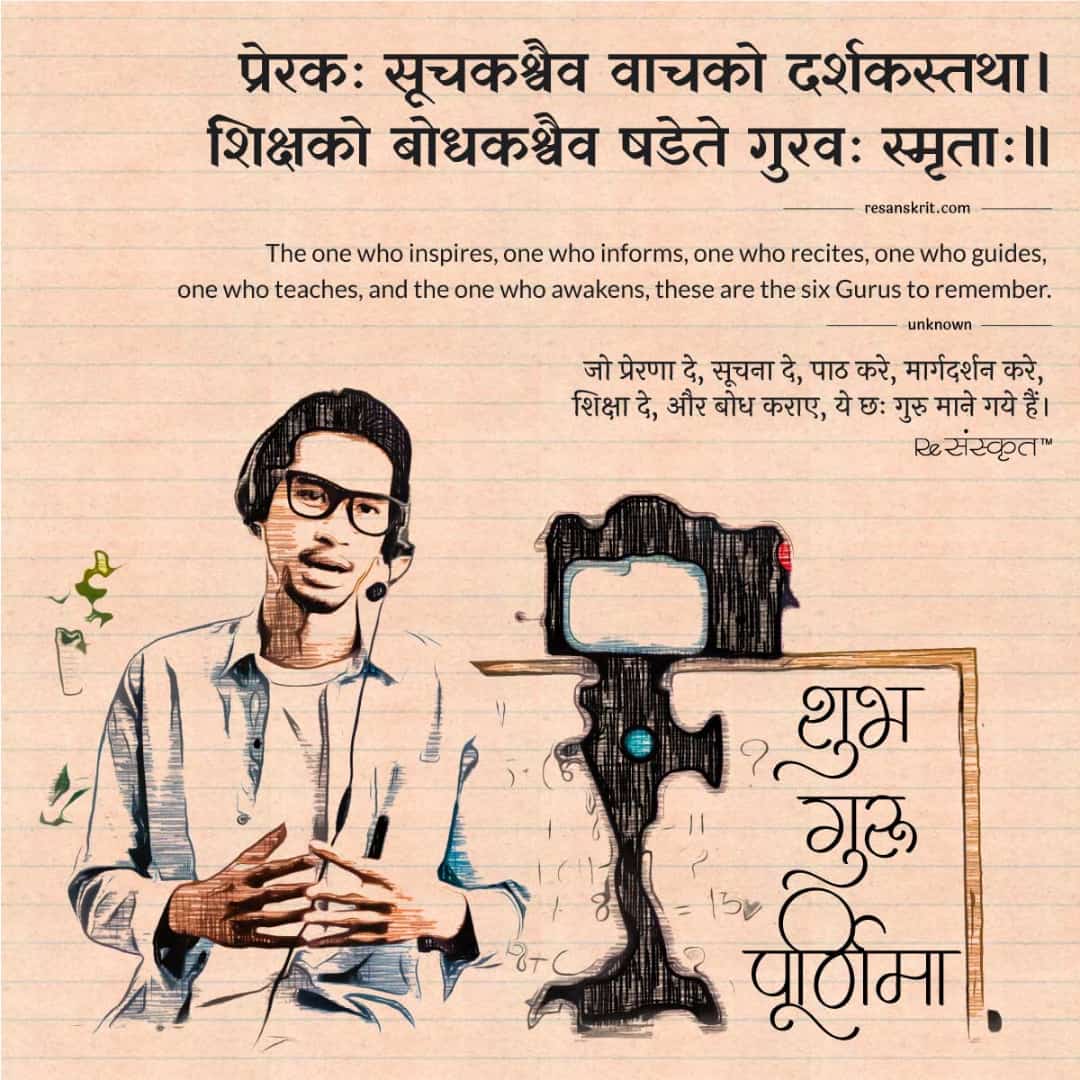

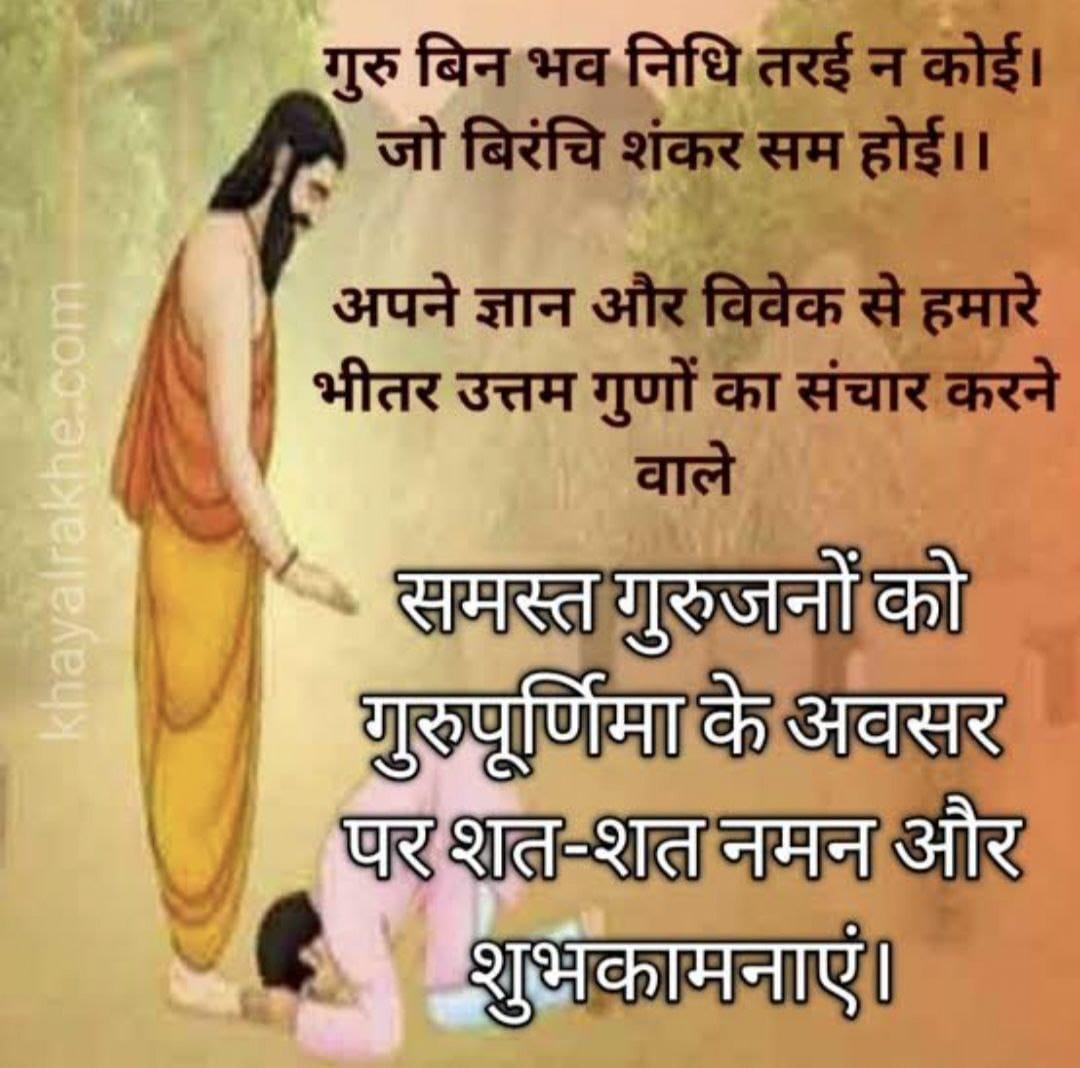
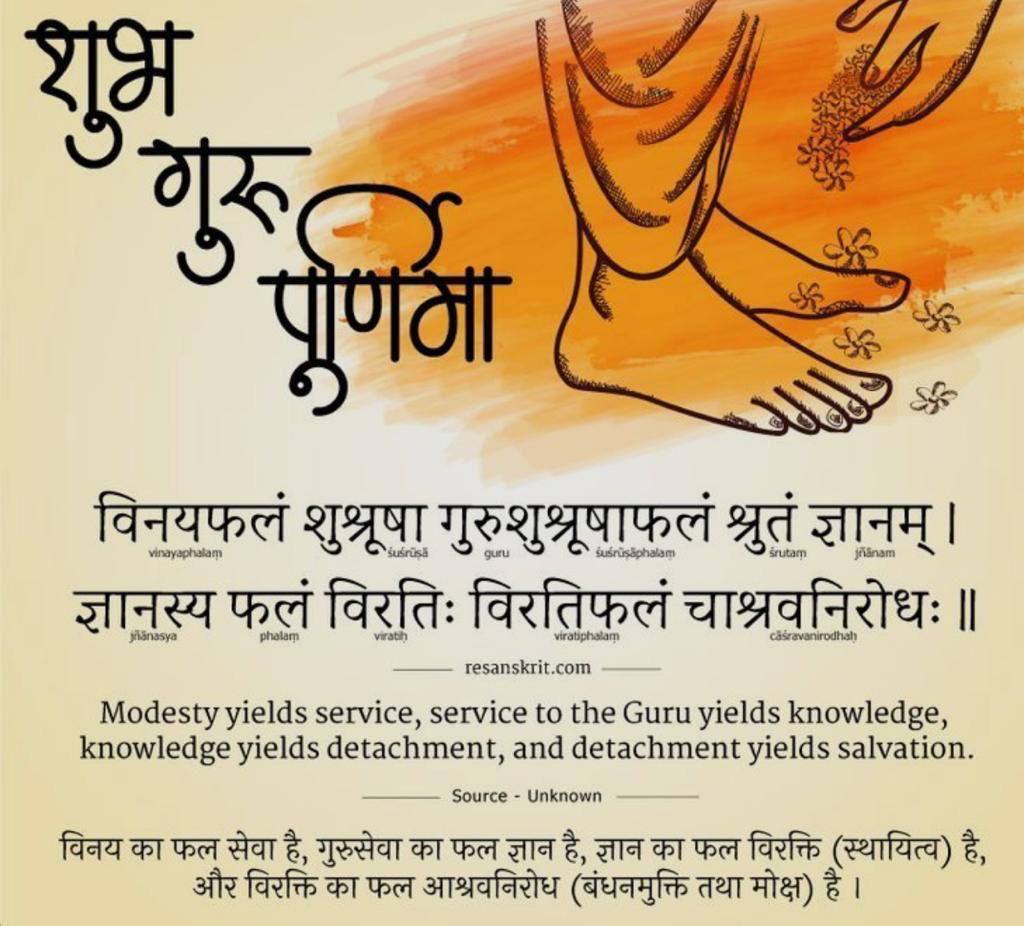


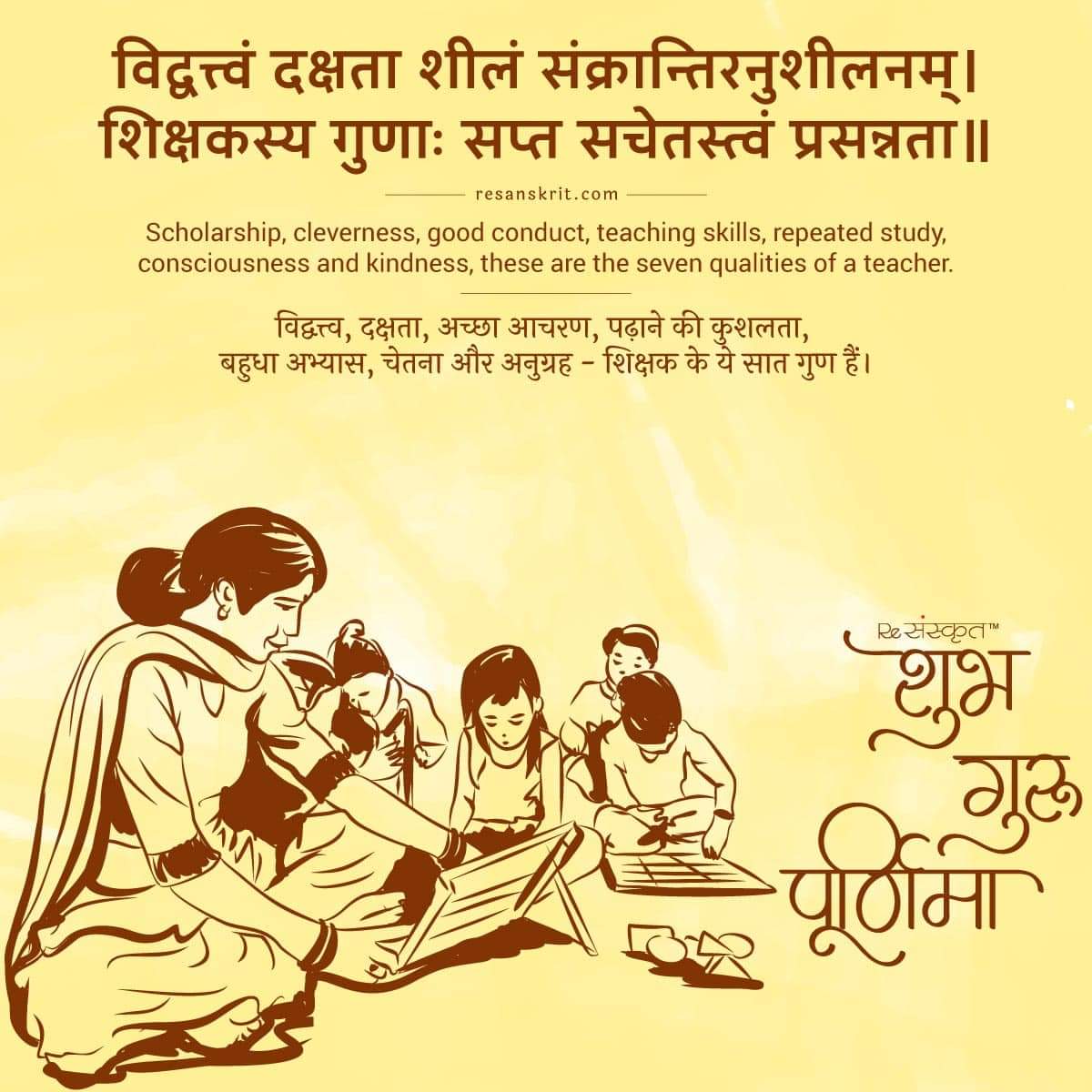


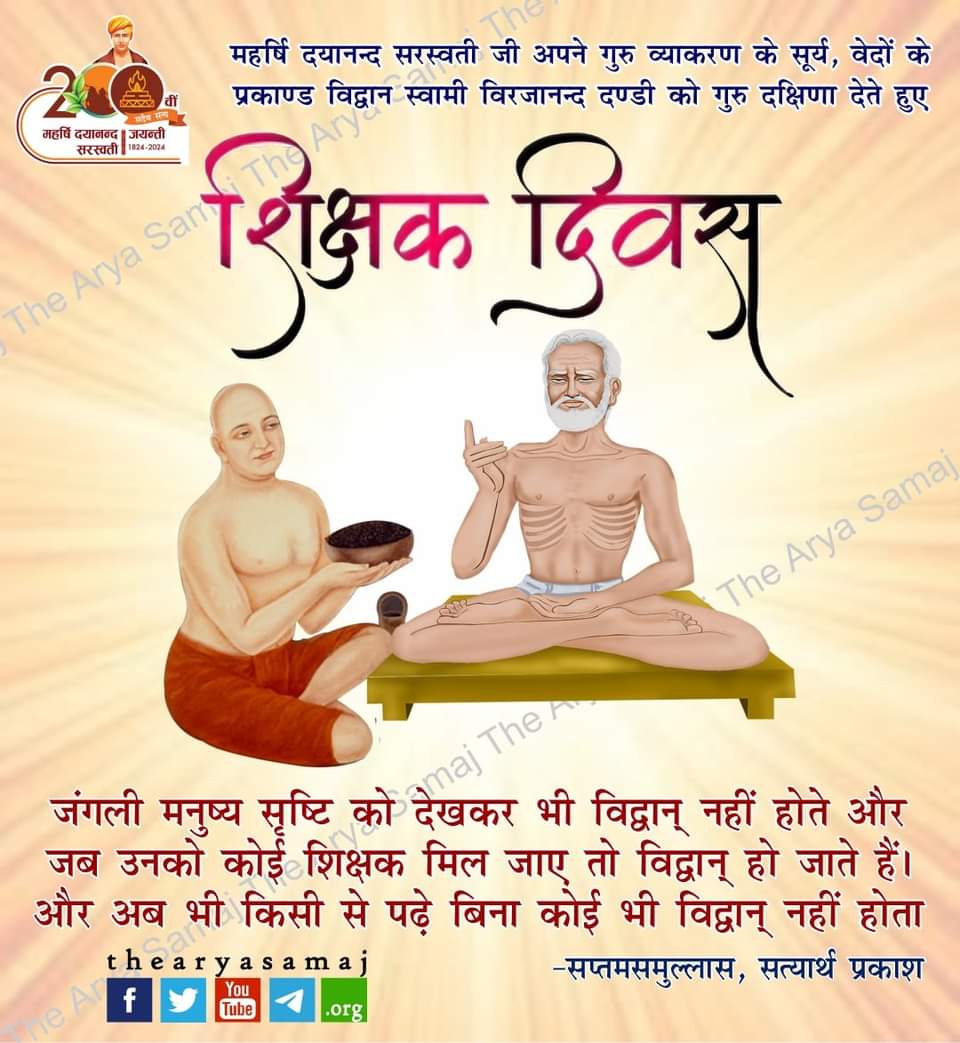
बालकों का भिखारी
मैं आज झोली पसार कर भिक्षा मांगने निकला हूं। द्वार-द्वार पर जाकर भिक्षा के लिए पुकार लगाऊंगा। अरे, यह क्या! कुछ लोग मेरी की ओर चले आ रहे हैं ! पूछते हैं--बाबा, तुम्हें क्या चाहिए? भाइयों, मैं बालकों की भीख मांगता हूं।
एक,दो,तीन,चार, जिसके पास जितने बालक हों, मुझे भिक्षा में दे दो। क्या कहते हो? मैं बालकों का क्या करूंगा? सुनो मैं उन्हें अपने आश्रम में ले जाकर मारूंगा, उनका वध करूंगा, उन्हें मृत्यु की भेंट चढ़ाऊंगा।
अरे,यह क्या ! यह तो भगदड़ मच गई ! बालकों को पकड़ने वाला बाबा आया, बालकों को पकड़ने वाला बाबा आया, यह कहते हुए सब भागे जा रहे हैं। देखते ही देखते सब घरों के किवाड़ बन्द हो गए।
नगर- भर मैं बिजली की तरह समाचार फैल गया। सब के मुख पर यही चर्चा है। कोई कहता है, ऐसे साधु बहुत से छूटे हुए हैं। कोई कहता है, यह बालकों को पकड़कर बेच देते हैं; बालकों का मांस पकाने वाले कई होटल शहरों में पकड़े गए हैं। जितने मुंह उतनी बातें हैं।
अब मैं क्या करूं? किसे अपनी बात समझाऊं ? जहां जाता हूं लोग डरकर भागते हैं। अच्छा, यह कुछ सयाने लोग खड़े हैं। इनके पास जाता हूं। क्या है बाबा क्या चाहिए ? यह ले आटा, दाल, चावल, रोटी,कपड़ा,कंबल । नहीं- नहीं, मुझे इनमें से किसी वस्तु की आवश्यकता नहीं है। मैं तो बालकों का भिखारी हूं, बालक मांगता हूं। क्या तू बालकों को पकड़कर ले जाता है ? नहीं, मैं बालकों को पकड़कर नहीं ले जाता। जो कोई खुशी से अपने बालक देता है, उसके बालकों को मैं अपने साथ ले जाता हूं। हमने सुना है तू बालकों को ले जाकर मार डालता है? हां, तुमने ठीक सुना है। मैं उन बालकों को ले जाकर मारता हूं। परन्तु तो उन्हें क्यों मारता है?
मैं उन्हें मारता हूं ज़िंदा करने के लिए, मार कर फिर नया जन्म देने के लिए। क्या तू कोई जादूगर है? हां, मैं जादूगर हूं, मैंने अपने गुरु से अनोखी जादूगरी सीखी है।
सुनो, मैं तुम्हें अपनी राम कहानी सुनाता हूं। किसी समय में भी अपने मां-बाप का लाडला 8 वर्ष का बालक था। एक दिन एक ओजस्वी चेहरे वाला बाबा आया, जो अपने आप को 'मृत्यु'कहता था। वह मुझे मेरे माता-पिता से मांग कर ले गया शहर से दूर नदी पार जंगल में एकांत स्थान पर बने हुए अपने आश्रम में ले-जाकर उसने मुझे छोड़ दिया। वहां मेरे जैसे कुछ और भी बालक थे। उन्हें मारने की तैयारियां हो रही थीं, तो भी वे प्रसन्न थे। मैं भी उन्हीं में जा मिला। बाबा ने छोरियों से मेरा एक- एक अंग काटा और मुझे अपने पेट के हवाले किया। 3 रातें पेट में पड़ा रहा। पर यह रातें साधारण न थीं, बारह-बारह वर्ष की एक रात थी। 36 वर्ष बाद मेरा नया जन्म हुआ। अब मैं चवालिस वर्ष का हो गया था। मैंने देखा मैं बिल्कुल बदल गया हूं। कोई मुझे पहचानता ही नहीं था। फिर बाबा का आदेश हुआ, आगे चलकर यह कार्य तुझे करना होगा। और उन्होंने मुझे अपनी जादूगरी के भेद बताने शुरू कर दिए। आज उन बाबा के स्थान पर मैं बाबा बनकर घूम रहा हूं और लोगों से कहता हूं कि मुझे अपने बालक दो, मैं उन्हें सच्चा आदमी बना दूंगा।
आप सोचते होंगे पहेली तो वैसी की वैसी ही रही। अच्छा तो मैं आप को और अधिक संदेश हमें रखना नहीं चाहता, सब रहस्य साफ-साफ बताएं देता हूं। जो बाबा मुझे मेरे माता-पिता से मांग कर ले गया था वह एक गुरुकुल का आचार्य था। आचार्य का ही वैदिक नाम 'मृत्यु' है, क्योंकि जैसे मृत्यु मनुष्यों को मारकर नया जन्म देता है, वैसे ही आचार्य बालक के अज्ञान को मारकर बालक को नया जन्म देता है। मैंने अभी आपसे कहा था कि बाबा ने मुझे छोरियों से काटकर अपने पेट में रख लिया और 36 वर्ष तक रखे रखा। यह बात भी ठीक है। किंतु छोरियां लोहे की साधारण छोरियां नहीं हैं, वह हैं यम- नियमों की छुरियां। यम-नियमों की छुरियां चलाकर आचार्य ने मेरे सब कुसंस्कारों को नष्ट कर दिया, मानव मुझे मार डाला। मारकर पेट में रख लिया। पेट में रखने का भाव ब्रह्मचर्य सूक्त के इस मंत्र में स्पष्ट हो जाता है--"आचार्य उपनयनमानो ब्रह्मचारिणं कऋणउतए गर्भमन्तस्तं रात्रीस्तिस्त्र उदरे बिभर्ति"।अथर्व•११.५.३
--आचार्य उपनयन संस्कार करके ब्रह्मचारी को अपने गर्भ में धारण करता है, और तीन रात्रि अर्थात 36 वर्ष तक या जब तक उसका आचार्याधीन गुरुकुल वास पूर्ण नहीं होता, वह उसे अपने गर्भ में धारण किए रहता है। 36 वर्ष बाद आचार्य ने मुझे नया जन्म दिया अर्थात् स्नातक बनाया। फिर उसने अपनी सूक्ष्म दृष्टि से मेरे अन्दर कुछ प्रस्फुटित होने वाले भावी गुणों का बीज देख मुझे अपने पास ही रख लिया और मुझे आचार्ययत्व की शिक्षा देनी प्रारम्भ की, या यूं कहिए कि उसने मुझे अपनी जादूगरी के भेद बताने शुरू कर दिए। शनै: शनै : मुझे पूर्ण जादूगर हुआ जानकर मुझ पर अपना भार सौंप उसने इस कार्य से संन्यास ले लिया। इस प्रकार में ' मृत्यु ' का ब्रह्मचारी हूं और अब आचार्य कहाता हूं।
अब मुझ पर यह बाहर है कि मैं नगर वासियों के बालकों को मांगने निकला हूं। जो कोई मुझे अपने बालक देगा, उसके बालकों को मैं अपने आचार्य की सिखाई हुई पद्धति से मारकर नया जन्म दूंगा। तुमने सुना होगा नवप्रविष्ट बालक को आचार्य मेखला धारण करवाता है। तगड़ी पहनाता है। मैं भी उस बालक को मेकला बांधूंगा। शायद तुम पूछो कि मेखला बांधने से क्या होगा? मूंज या सूट के थोड़े से धागों से बनी हुई मेखला क्या कर लेगी? मेकला ब्रह्मचर्य आश्रम की जान है, वह कटिबद्धता का प्रतीक है। कटिबद्ध होने का या कमरकस लेने का मुहावरा प्राचीन आर्यों के मेखलाधारण से ही चला है। मेखला का व्यवहार यद्यपि छूट सा गया है, तो भी मेखला संसार से बिल्कुल लुप्त नहीं हुई है, ना हो सकती है। आजकल उसका स्थान कमर पेटी, लंगोट, धोती के कमरबन्ध आदि ने ले लिया है। अतः मेकला बांधकर मैं बालक को कटिबद्ध करूंगा। ब्रह्मचर्य आश्रम में जिन बातों के लिए कटिबद्ध रहना आवश्यक है उनमें से मुख्य है---ब्रह्म, तप और श्रम। इसलिए मेकला द्वारा मैं अपने पास आए बालक को ब्रह्म तप और श्रम से बांधूंगा।
ब्रह्मा का अर्थ है ज्ञान, तब का अर्थ है नियम पालन, और श्रम का अर्थ है परिश्रम। मेकला बांधकर मैं उसे इन तीनों बातों के लिए कटिबद्ध करूंगा। जो बालक मेरे पास आएंगे, वे प्रसन्नता पूर्वक अपनी कटि में मुझसे मेकला बंधवा ते हुए कहेंगे
य इमां देवो मेखलामाबबन्ध
य:संननाह यह उ नो युयोज।
यस्य देवस्य प्रशिषा चराम:
स पार मिच्छात् स च नो विमुञ्चात् ।।
--अथर्व•,६.१३३.१
जिस आचार्य देव ने हमें मेखला बांधी है, जिसने हमें कटिबद्ध किया है, जिसने हमें नियम पालन में नियुक्त किया है, जिस देव के अनुशासन में हम चल रहे हैं, वह हमें इस ब्रह्मचर्य आश्रम से बाहर करे, वहां हमें स्नातक बनाकर लोक कल्याण के लिए बाह्य जगत् में छोड़े। इसके अगले मन्त्र में कहा:-
आहुतासि-अभिहुत, ऋषीणामसि-आयुधम्।........२
पूर्वा व्रतस्य प्राश्नती, वीरध्नी भव मेखले।।
हे मेखला, तू आहुति से संस्कृत है, अभिमंत्रित है। तू ऋषियों का आयुध है। तेरे द्वारा ऋषिजन आलस्य, प्रमाद आदि को मार भगाते हैं। ब्रह्मचर्य व्रत धारण के पूर्व तो शरीर पर आकर बनती है। तू हमारे प्रचंड से प्रचंड काम क्रोध आलस्य आदि शत्रुओं को नष्ट करने वाली हो,हमें विरत्व प्राप्त कराने वाली हो।
श्रद्धाया दूहिता.........३
सा नो मेखले...........४
यां त्वा पूर्वे..............५
प्राचीन भूत का निर्माण करने वाले बड़े-बड़े ऋषि जन जिस तुझको अपनी कमर में बांधते रहे हैं, वह तो मेखला, मेरी कटि का आलिंगन कर और मुझे दीर्घायुष्य प्रदान कर।
अच्छा, तो अब मेरी कहानी पूरी होती है। अब तो आप लोग मुझसे भयभीत नहीं होंगे? अब तो बालकों को मारने खाने वाले मुझे बाबा को आप लोग अपने बालक नि:संकोच दे सकेंगे। और, क्या मैं यह आशा भी करूं कि मुझे अपने आश्रम का आवश्यक कार्य छोड़कर बालकों को मांगने के लिए आपके पास आने की आवश्यकता नहीं पड़ेगी, आप लोग स्वय मेव अपने बालकों को लेकर मेरे आश्रम में आएंगे और कहेंगे
आवर्त पीतरो गर्भ कुमारं पुष्करस्त्रजम्।
यथेह पुरुषोऽसत्।। यजु॰ 2/33
हे गुरुजनों, हम अपने इस प्यारे बालक को कमल- फूलों की माला पहनाकर आप के समीप लाए हैं। आप उपनीत कर इसे अपने गर्भ में धारण कीजिए जिससे यह आदमी बन जाए।
वैदिक मन्त्र
मृत्योरहं ब्रह्मचारी यदस्मि निर्याचन् भूतात् पुरुषं यमाय।
तमहं ब्रह्मणा तपसा श्रमेण-अनयैनं मेखलया सानिया।। अथर्व ६.१३३.३
आचार्य उपनयन मानो ब्रह्मचारिणं कृणुते गर्भमन्तस्तम रात्रीस्तिस्त्र उदरे बिभर्ति।
अथर्व॰११.५.३
य इमां देवी मेखला मा बबन्ध,य: सं ननाह य उ नो युयोज यस्य देवस्य प्रशिषा चराम:
स पार मिच्छात् स उ नो विमुञ्चात्।।
अथर्व॰६.१३३.१
आधत् पितरो गर्भ कुमारं पुष्करस्त्रजम्
यथेह पुरुषोऽसत्।। यजु॰ २/३३
वैदिक भजन ११०४
बालकों का भिखारी कहानी पांच भागों में
राग मिश्र बिहाग
गायन समय रात्रि का दूसरा प्रहर
ताल विलंबित कहरवा ८ मात्रा
भाग १
मैं झोली पसारे द्वार द्वार
भिक्षा ही मांगने आया हूं
क्या चाहिए मुझसे पूछो भला
किस लिए द्वार पर आया हूं।।
मैं झोली
ऐ भाई ! सुनो मैं बाबा हूं
भोला भाला और सादा हूं
मैं भीख में बालक मांग रहा
यूं समझो मैं पक्का इरादा हूं
जितने देना चाहो बालक
मैं नि:संकोच ही आया हूं।।
मैं झोली
क्या लेकर करूंगा तुम्हारे शिशु
तुम पूछो तो बतलाऊंगा
आश्रम में ले जा के उनका
बात करूंगा उनको मारूंगा
उन्हें मृत्यु की भेंट चढ़ाऊंगा
कुछ बालक लेने आया हूं
मैं झोली
इतना सुनते भगदड़ मच गई
खिड़की किवाड़ सब बन्द हुए
विद्युत की तरह फैली यह खबर
और हौसले सबके मन्द हुए
क्यों सूख गया है सांप तुम्हें
क्या लगता तुम्हें पराया हूं ?
मैं झोली
सीट्टी- पिट्टी सबकी गुम थी
कहीं बाबा कई यूं घूम रहे
अगवा बालक कई बेचे गए
खाने को मांस यह खून करे
पूछा बाबा ने क्या तुमको
मैं लगता मौत का साया हूं ?
मैं झोली
भाग २
मैं झोली पसारे द्वार द्वार
भिक्षा ही मांगने आया हूं
क्या चाहिए मुझसे पूछो भला
किसलिए द्वार पर आया हूं
मैं झोली
क्या करूं कैसे समझाऊं भला ?
जितने मुंह उतनी बातें हैं
जितना मैं भुलाऊं पास उन्हें
उतना भी डर के भागे हैं
रोटी, आटा, धन-धान्य ना दो
इसलिए ना झोली लाया हूं।।
मैं झोली
बाबा क्यों मांगते हो बालक?
क्यों वध करने ले जाते हो?
ले जाता हूं बालक मैं तभी
जब खुशी से तुम दे जाते हो
उन्हें मारता हूं जीवित करने
नए जन्म की मृत्यु -छाया हूं।।
मैं झोली
हम क्या सोचे तुम को बाबा?
क्या तुम हो कोई जादूगर?
मर कर भी क्या कोई है जीता
कुछ तो समझाओ साधुवर !
हूं जादूगर, ऐसा जादू
मैं गुरु से सीख कर आया हूं।।
मैं झोली
अब राम कहानी मेरी सुनो
मां-बाप का मेमैं इकलौता था
एक दिन विभूत बाबा आया
वह स्वयं को मृत्यु कहता था
मां बाप से मांग लिया मुझको
उस वक्त बहुत घबराया हूं
मैं झोली
भाग ३
मैं झोली पसारे द्वार द्वार
भिक्षा ही मांगने आया हूं
क्या चाहिए मुझसे पूछो भला
किसलिए द्वार पर आया हूं ?
नहीं झोली
एकांत से वन में शहर से दूर
आश्रम में छोड़ा मुझे अब की
वहां मेरे जैसे बालकों की
तैयारियां हो रही थी वध की
उन्हें देख प्रसन्न ! हैरान हुआ
सोचा ! किस जगह में आया हूं?
मैं झोली
छुरियों से मेरा अंग-अंग काटा
बाबा ने उदर में मुझे रखा
मैं तीन रात तक बाबाजी
के पेट में जाकर पला रहा
एक रात थी बारह वर्षों की
उसे कभी ना भूलने पाया हूं ।।
मैं झोली
छत्तीस वर्ष नया जन्म मिला
था आठ का चौवालीस का हुआ
मैं युवा था पूरा बदल गया
मैं किसी से ना पहचाना गया
बाबा से लिया नवज्योत आदेश
जादू का भेद भी लाया हूं।।
मैं झोली
बाबा से जादू सीख लिया
अब मैं बाबा बन घूम रहा
लोगों से कहता बालक दो
बालकों के मस्तक चूम रहा
नीचे इन्द्रजाल से बालकों को
मानव ही बनाने आया हूं।।
मैं झोली
भाग ४
मैं झोली पसारे द्वार- द्वार
भिक्षा ही मांगने आया हूं
क्या चाहिए मुझसे पूछो भला
किसलिए द्वार पर आया हूं?
मैं झोली
मैं खोलूं पहेली का पर्दा
जादू सच्चा मैं दिखाता हूं
इसमें कोई संदेह नहीं
एक-एक करके मैं सुनाता हूं
शब्दों का जाल था यह केवल
पर वेदों से समझ कर आया हूं
मैं झोली
बाबा आचार्य यह गुरुकुल के
मुझे मेरे घर से लेकर गया
वेदों ने आचार्य को ' मृत्यु ' कहा
अघमर्षण कर नया जन्म दिया
मृत्यु ने बनाया मुझे अमृत
नया जन्म में फिर से पाया हूं।।
मैं झोली
छुरियों में थी यम- नियमों की धार
और काट दिए सब कुसंस्कार
मिट गया पापा का पूर्व जन्म
आचार्य ने स्नात की है संस्कार
उपनयन से मैं ब्रह्मचारी बन
आचार्य के गर्भ से आया हूं।।
मैं झोली
फिर से तीन रात्रि से गर्भ में
वर्ष आठ का मैं चवालिस का हुआ
आचार्य ने गर्भ में स्नात किया
इस तरह मैं स्नातक नीक हुआ
परिपूत हुआ यह नया जीवन
मैं फिर से जीने आया हूं।।
मैं झोली
भाग ५
मैं झोली पसारे द्वार- द्वार
भिक्षा ही मांगने आया हूं
क्या चाहिए मुझसे पूछो भला
किस लिए द्वार पर आया हूं,?
मैं झोली
अब सूक्ष्मदृष्टि से गुरुवर ने
मेरे अन्तस में झांक लिया
होने वाले प्रस्फुटित गुणों को
मेरे आचार्य ने भांप लिया
शिक्षत्व की शिक्षा की भिक्षा
पाने चरणों में आया हूं।।
मैं झोली
गुरु के सानिध्य में ही रहके
इस जादूगरी का भेद लिया
कार्यभार मेरे कंधों पर रख
सन्यास आश्रम में प्रवेश किया
आचार्य बने फिर सन्यासी
और मैं ' मृत्यु ' बन आया हूं।।
मैं झोली
अब बालक देंगे खुशी से जो
उन्हें मेखला में बंधवाऊंगा
फिर ब्रह्म तप श्रम व संयम का
मैं सच्चा पाठ पढ़ाऊंगा
वे पूत प्रबुद्ध बनें स्नातक
नया जन्म दिलाने आया हूं।।
मैं झोली
यह मेरी कहानी पूर्ण हुई
अब मुझ से लोग ना डरते हैं
अपने बालक इस बाबा को
बड़े हर्ष से अर्पित करते हैं
इक- इक जन कहेगा बाबाजी !
मेरा बालक खुद ही लाया हूं।।
मैं झोली
बालक को कमल पुष्प माला
पहना चरणों में लाया हूं
उपनीत करो इससे गर्भ में रख
नए जन्म के लिए सजाया हूं
जिससे बन जाए यह मानव
इस प्रत्याशा से आया हूं।।
मैं झोली
वध=मार देना
सिट्टी पिट्टी गुम होना
विभूत=महान व्यक्ति
उदर= पेट
Guru is far more than a teacher. Teacher gives knowledge but Guru gives himself. The real teachings of a Guru are not his words but what remains unspoken, because it goes beyond the power of human speech. The guru is an inspirer in the truest sense of this world, i.e. one who infuses us with his own living spirit.
Chela is a deciple who has established a profound spiritual relationship with the guru, a relationship that is founded on the act of initiation, during which a direct 'transferance of power' takes place and is embodied in the sacred formula (mantra) through which this power can be called up by the chela at any time and through which a permanent contact with the Guru is maintained. - Lama Anagarika Govinda
Movies:
Rough book
Race to Nowhere- Documentary